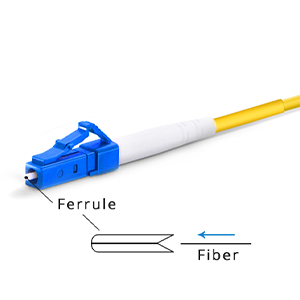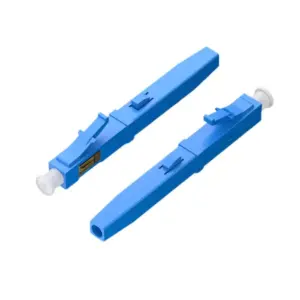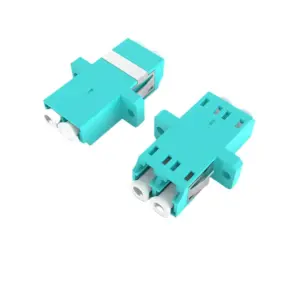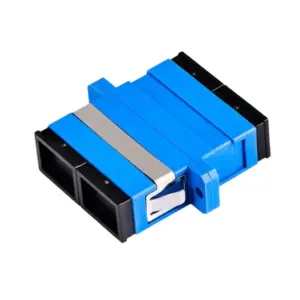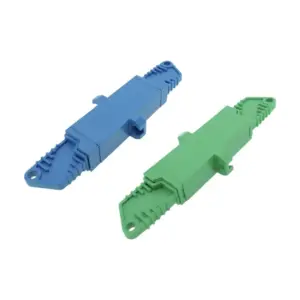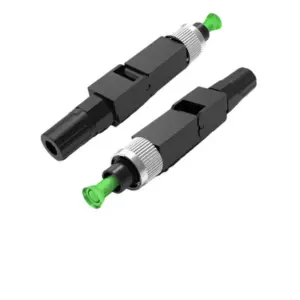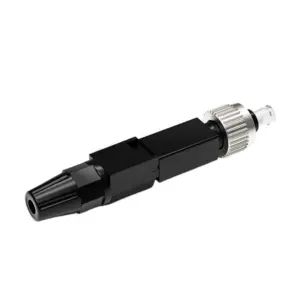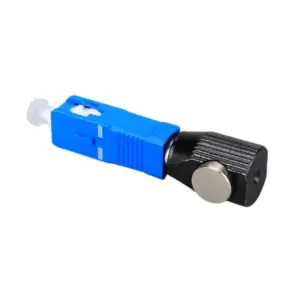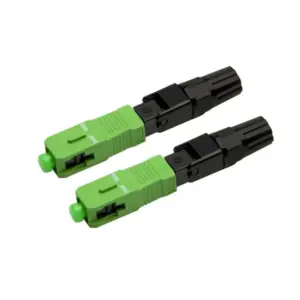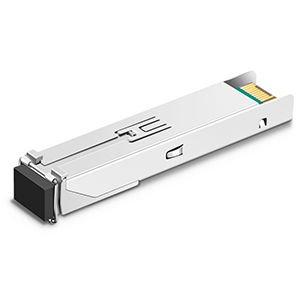Hello everyone! As a high-performance and widely used optical fiber connection method, upc fiber connector plays a decisive role in broadband access networks, data centers and other fields. Today I am honored to provide you with an in-depth analysis of the technical characteristics, main application scenarios and correct installation and maintenance methods of UPC connectors. By fully understanding the advantages of UPC connectors, I believe you will be able to choose the best solution for your fiber optic network and further improve the overall transmission efficiency and reliability.
Overview of UPC fiber optic connectors
Let me give you an overview of UPC fiber optic connectors:
Definition and development history of UPC fiber optic connector:
- UPC is the abbreviation of “Ultra Physical Contact”, which refers to a high-performance optical fiber connector.
- UPC connector was originally developed in the 1980s and is another mainstream fiber optic connection method after FC and SC.
- It uses a physical direct contact connection method to provide low-loss, high-stability optical signal transmission.
The role of UPC connectors in fiber optic systems:
- Provide reliable optical connections between fiber optic devices to ensure smooth transmission of optical signals.
- Plays an important interface role in optical fiber networks, promoting the interconnection of different devices.
- With its excellent optical performance, it plays a key role in applications that have strict requirements on signal quality.
Main features of UPC connectors compared to other types:
- The optical signal transmission loss is low, usually less than 0.3dB, which is better than FC, SC and other connectors.
- The fiber end face alignment has high precision and can provide stable optical coupling characteristics.
- Strong resistance to optical power damage, suitable for high-power optical signal transmission.
- The structure is simple and compact, easy to install and maintain, and is widely welcomed by users.
- The price is slightly higher than ordinary optical fiber connectors, but it is cost-effective.
In short, UPC fiber optic connectors play an important role in fiber optic communication systems with their excellent optical performance and reliability. It is widely used in professional optoelectronic equipment and network systems that require high transmission quality, and is one of the important developments in today’s optical fiber connection technology.
Technical characteristics of UPC fiber optic connector
Let me introduce to you the technical characteristics of UPC fiber optic connectors in detail:
Physical structure and material composition of UPC connectors:
- Shell material: usually made of metal, such as stainless steel, which provides good mechanical strength.
- Interface structure: push-pull quick connection, easy to operate and reusable.
- Optical fiber interface: Using high-precision ceramic ferrules to ensure the flatness of the fiber end face.
- Package structure: Sealed design, dustproof and waterproof, protecting internal optical components.
Optical, mechanical and safety properties of UPC connectors:
Optical performance: Optical signal transmission loss is extremely low, usually less than 0.3dB, which is better than other connectors. Low reflection loss helps reduce interference and distortion of optical signals. Reliable fiber alignment mechanism ensures excellent optical coupling efficiency.
Mechanical properties: It can withstand large mechanical vibrations and impact loads, and is suitable for harsh environment applications. The connection has good stability and can provide long-term and reliable optical signal transmission. Long service life, usually up to more than 1000 connections/disconnects.
Safety performance: It has excellent resistance to optical power damage and can withstand high optical power. There is no need to expose the fiber end face during the connection process, thus avoiding direct exposure to human eyes. It is helpful to ensure the safe and reliable operation of optical fiber networks.
Key technical indicators and their significance of UPC connectors:
- Optical signal transmission loss: reflects the optical coupling efficiency and determines the signal quality.
- Reflection loss: affects the degree of interference and distortion of optical signals.
- Mechanical reliability: determines the long-term stability and service life of the connection.
- Anti-optical power damage resistance: determines the applicable optical power range and safety.
In short, UPC optical fiber connectors are widely used in various high-speed and high-power optical fiber communication systems with their excellent optical transmission performance, high-reliability mechanical design and excellent safety. They are an important technology in the current field of optical fiber connections. one.
Application scenarios of UPC fiber optic connectors
Let me introduce to you the typical applications of UPC fiber optic connectors in different fiber optic network application scenarios, and its important role in improving optical signal transmission efficiency:
Application of UPC connector in broadband access network:
- Broadband access network is a key link in extending optical fiber networks to users’ homes and businesses.
- UPC connectors are widely used in FTTH/FTTB access networks due to their low loss and high reliability.
- Ensures the efficiency and stability of optical signal transmission in broadband access networks.
Applications of UPC connectors in data center networks:
- Data center networks require high-bandwidth, low-latency optical fiber transmission performance.
- The excellent optical performance of UPC connectors can effectively meet the transmission needs of data centers.
- In high-density fiber optic cabling environments, UPC connectors play a key role.
Application of UPC connectors in telecommunications trunk networks:
- Telecom trunk network is an important part of the high-speed optical fiber backbone network.
- The low-loss characteristics of UPC connectors are conducive to improving the signal transmission efficiency of the trunk network.
- In long-distance transmission, UPC connectors can minimize optical signal attenuation.
The importance of UPC connectors in improving optical signal transmission efficiency:
- Optical signal transmission efficiency is one of the key indicators of optical fiber network performance.
- The excellent optical performance of UPC connectors can minimize the loss of optical signals.
- Thus improving the transmission rate, capacity and reliability of the entire optical fiber network.
- Plays a key role in modern optical communications applications that require high bandwidth and low latency.
In general, UPC optical fiber connectors are widely used in various optical fiber networks such as broadband access networks, data centers, and telecommunications trunk lines due to their excellent optical transmission performance. It plays an important role in improving the efficiency of optical signal transmission and is one of the key supports for the development of today’s optical fiber networks.
Installation and maintenance of UPC fiber optic connectors
Let me introduce to you the installation and maintenance of UPC fiber optic connectors:
Correct installation process and precautions for UPC connectors:
- Check whether the connector and fiber end face are clean and free of contamination.
- Align the fiber end face carefully to ensure complete contact and avoid tilting.
- Gently push the connector in until you hear a “click” sound to indicate locking.
- Avoid excessive force to avoid damaging the optical fiber or connector structure.
- After installation, check whether the connection is firm and not loose.
Daily inspection and maintenance methods of UPC connectors:
- Regularly check the cleanliness of connectors and fiber end faces.
- Use special cleaning cloth or paper to wipe the end surface to remove dust and other contaminants.
- If necessary, use fiber end face cleaning fluid for deep cleaning.
- Check whether the connecting parts are loose or damaged, and repair and replace them in time.
- Keep connector caps on to avoid accidental damage to the end face.
Common faults of UPC connectors and their troubleshooting measures:
- The optical signal transmission loss is too high: check whether the connection is firm and whether the end face is clean. Reclean the connector and reconnect
- Scratches or other mechanical damage occurs on the connector surface: Replace the damaged connector promptly. Be careful to avoid further damage
- Connectors often fall off or become loose: Check whether the locking mechanism of the connector is working properly. Replace the connector or change the location of the connection point
So, correct installation of UPC connectors and regular maintenance are key to ensuring the performance and reliability of fiber optic networks. Paying attention to the installation process, keeping the end face clean, and troubleshooting in time are important to maximize the performance of the UPC connector.
UPC fiber optic connectors compared to other types
Let me compare the characteristics of UPC fiber optic connectors with other types of connectors and analyze their applicability in different application scenarios:
Comparison of UPC and APC connectors:
- Optical signal transmission loss: UPC is generally less than 0.3dB, APC is less than 0.2dB, and APC is slightly better.
- Reflection loss: UPC is usually less than -40dB, APC is less than -60dB, and APC has better reflection performance.
- Fiber end face shape: UPC is a vertical end face, APC is an 8-degree slope, and APC is more conducive to anti-reflection.
- Cost: UPC connectors are relatively low, while APC connectors are more expensive.
The applicability of various connectors in different application scenarios:
- For high-speed transmission applications that require low reflection, such as CATV, analog transmission, etc., APC is more suitable.
- For cost-sensitive applications, such as broadband access such as FTTH, UPC is a more economical choice.
- For ordinary data transmission applications that do not have high requirements on optical signal quality, UPC can also meet the needs.
The advantages of choosing UPC connectors and their scope of application:
- The cost is relatively low and it is a cost-effective optical fiber connection solution.
- The optical performance is good and can meet the needs of most typical fiber optic network applications.
- Simple structure, easy installation and maintenance, suitable for scenes with less stringent environmental requirements.
- Suitable for common fiber optic network applications such as medium and low speed data transmission and video transmission.
In general, although UPC fiber optic connector is slightly inferior to APC in reflection performance, its cost advantage and installation convenience make it a more economical and practical fiber optic connection choice. In application scenarios that do not require extremely high optical signal quality, UPC connectors are a more suitable first choice.
Summary
UPC fiber optic connectors are undoubtedly the best choice in the construction of fiber optic communication networks. Its excellent optical performance, structural reliability and wide range of applicable scenarios all highlight the important status of UPC connectors. Whether in broadband access networks, data centers or other fields, UPC connectors can inject powerful power into your optical fiber network to ensure efficient and stable optical signal transmission.
We provide professional fiber optic connector products and installation and maintenance services, and are equipped with an experienced technical team to provide you with considerate guidance at any time. If you have any questions about selecting or using UPC connectors, please feel free to contact us for communication.
upc fiber connector FAQ
UPC (Ultra Physical Contact) fiber connectors are a type of fiber optic connector that provides a high-quality, low-loss connection between optical fibers. They feature a polished fiber end face with a very smooth, convex shape.
The key difference is the polished end face shape. UPC connectors have a convex, “ultra-polished” end face, whereas other connector types, like APC (Angled Physical Contact), have a polished end face with an angled finish.
UPC connectors offer low insertion loss, low back reflection, and excellent optical performance. They are well-suited for applications where high-quality, low-loss connections are required.
UPC connectors are widely used in telecommunications, data communications, and various other fiber optic applications where optimal signal transmission is critical, such as in FTTH (Fiber-to-the-Home) networks.
While both UPC and APC connectors provide high-quality optical connections, APC connectors typically have slightly lower back reflection levels compared to UPC connectors.
Key performance specifications include insertion loss (typically less than 0.3 dB), return loss (typically greater than 50 dB), and repeatability, which can vary depending on the specific connector design and application.
Proper termination of UPC connectors requires careful fiber cleaving, polishing, and connector attachment using specialized tools and techniques to ensure the optimal end face shape and optical performance.
Yes, UPC connectors are available in various styles, such as SC-UPC, LC-UPC, and FC-UPC, which differ in their physical dimensions and interfaces to accommodate different application requirements.
Proper cleaning techniques, including the use of lint-free wipes, alcohol, and specialized connector cleaning tools, are essential to keep UPC connector end faces free of contamination and maintain optimal performance.
While UPC connectors can be adapted to interface with other connector types, such as APC or standard PC (Physical Contact) connectors, using appropriate adapters, it is generally recommended to use the same connector type throughout a fiber optic system for optimal compatibility and performance.

